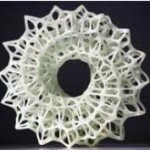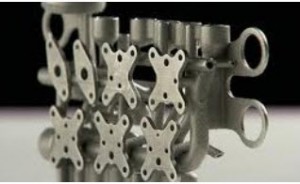SOURCE Fund for Our Economic Future, October 2012 article on National NAMII and collaboration
In conventional manufacturing, parts are machined, forged, molded or cast. Often, excess material is trimmed away to reveal the finished product.
 Additive manufacturing does not require machining, molds or trimming. Instead, parts are “printed” by a machine that works much like a standard ink-jet printer. But instead of making just one pass, the print head builds objects by alternating thin layers of material — such as metal or plastic powders — with layers of glue.
Additive manufacturing does not require machining, molds or trimming. Instead, parts are “printed” by a machine that works much like a standard ink-jet printer. But instead of making just one pass, the print head builds objects by alternating thin layers of material — such as metal or plastic powders — with layers of glue.
Just as your computer tells your printer how to print a page of a document, computer-aided design software guides the additive manufacturing printer through the complex layering process until the part is finished. Depending on the raw material used, the part may have to be cured at high temperature before it is finished.
Advocates say the process, also called 3-D printing, conserves energy and raw materials.
 Ten years ago, additive manufacturing was used almost exclusively to make prototypes, not finished parts, said
Ten years ago, additive manufacturing was used almost exclusively to make prototypes, not finished parts, said
Terry Wohlers, president of Wohlers Associates Inc., an industry consultant. Last year, nearly one-fourth of the money spent on additive manufacturing was for finished parts.
Wohlers projects that overall spending on additive manufacturing will more than triple from $1.7 billion last year to $6.5 billion in 2019.
Meantime, a smaller-scale version of 3-D printing is finding its way into schools and offices. Consumer-level 3-D printers cost around $1,500 out of the box or a few hundred dollars in unassembled kits.
Someday, Wohlers believes, a simple, safe 3-D printer will be marketed to children. Kids everywhere will be printing small toys, trinkets and whatever they can imagine. And like the VCR, the computer and the cell phone before it, additive manufacturing will be the next technology that a generation instinctively knows how to use.
